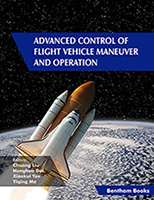Aircraft manufacturers and aviation are very important industries, both in social and economic aspects. According to the International Air Transport Association (IATA), aviation transported around 6.6 billion passengers in 2015 and provides approximately 62.7 million related jobs worldwide. Aircraft boost local and global growth with its civil and defense sector activities.
In particular, aircraft design has also a major impact on the society due to its safety record that inspires other industrial segments and technological spin-off effects. On the environmental side, in times of global warming, efficient aircraft will insert considerably fewer pollutants into the atmosphere and will consume less trip fuel. Most aircraft development programs make use of extensive and intensive research performed by academy as well as with the help of investments of the private sector in innovative technology. Few countries can develop, certify, market and support medium-to-large commercial airliners. This exemplifies the high level of effort, knowledge, and money involved in the aircraft manufacturing industry. Recycling of decommissioned aircraft and proper handling of the industrial processes to avoid environmental damage is part of the aircraft industry nowadays.
It is unfortunate that in the academic world few universities worldwide have a dedicated chair in airplane design, and even fewer in rotorcraft design. Most universities consider only basic disciplines such as aerodynamics, aeronautical structures, flight physics and space technologies as the fundamentals to provide higher education to aeronautical engineering undergraduate students. They disregard aircraft design as a specific discipline worthy of creating a specific chair. However, aircraft design enables the proper integration and practical application of all aeronautical disciplines. The authors of the present book have together over 60 years of experience working for one of the largest aircraft manufacturers in the world, major airlines and institution of superior education.
The present work is not intended to be or become a textbook, but to be complementary to the existing ones while highlighting environmental aspects on aircraft design. There are already several good books that were written with this purpose. Although these books have established some design practices and offer considerable data and information, most of them were mainly issued in the years 1980 to 1990. Also at that time, aircraft design was a sequential process starting with aerodynamics, followed by weight breakdown, load calculation, defining wing and tailplane areas and checking stability and controllability. Some of the methodology of these books is simple due to the lack of computer power in the past. However, aircraft design in the aircraft industry evolved from a sequential process in the past to the current utilization of high-fidelity multi-disciplinary design and optimization frameworks, where all disciplines are considered simultaneously and where everything depends upon everything. Therefore, today´s aircraft manufacturers are aware of the fact that modern engineers need to understand the whole aircraft as one complex system. There is a necessity for understanding the multi-disciplinary aspects of aircraft design also considering environmental aspects. Aircraft design disciplines are the best way to incorporate this philosophy. Books written in the past were unaware of these aspects. In the meantime, aircraft systems have evolved considerably. For instance, fly-by-wire systems have changed the way commercial and military aircraft are designed and flown. Aircraft with fly-by-wire systems are safer, more reliable, easier to fly, more maneuverable and fuel efficient with reduced maintenance costs. A fly-by-wire command and control system is already present in 9-seat business jet airplanes. All these new systems must be taken into consideration during the
conceptual design phase, where the aircraft sizing is carried out as well as other important tasks.
The proper understanding of the aviation and manufacturing business is very important for engineers. In this context, the present work provides the process and information for the elaboration of a business plan for a transport airplane project that includes information on how to conduct a market survey, undertake technological assessments as well as financial and risk analysis, and shows establishment of requirements. It is very important that the aeronautical engineer not restrict himself/herself to his/here discipline where he/she carries out his work but that, he/she can also understand the context of the aeronautical industry.
The continuous increase in computer speed and capacity has allowed finite-element methods for all structural layout, cabin configuration, and CFD methods to be incorporated in the conceptual design phase already. It is possible to integrate the different design boundaries, such as highspeed and low-speed aerodynamics, and as a follow-up step, today the multidisciplinary methods permit an aircraft to be designed by integration of aerodynamic, structural and flight mechanics design constraints and by using multidisciplinary optimization methodologies. Multi-disciplinary design and optimization is the modern design methodology for many aircraft design features and aspects and nearly all papers on aircraft design now use some sort of multidisciplinary optimization approach.
Future airplanes need to comply with new and more stringent environmental rules. New challenges with regard to performance and energetic efficiency may reshape the today’s airplanes entirely. The exploration of new business opportunities for aviation, which may also affect airplane configuration, is addressed. This book presents emission and noise models that were employed for optimal design airliners of distinct categories. There is a trend to power ground vehicles with electric engines. This will change the share of aviation in emissions and the way public deals with it.
Finally, post design techniques and devices to improve aircraft performance and efificency by improved and rethought aircraft operations are presented. Mitigation of design flaws are analyzed and discussed.
Bento S. de Mattos
Aircraft Design Department
Instituto Tecnológico de Aeronáutica (ITA)
São José dos Campos, São Paulo
Brazil
E-mail: greenfutureaviation@gmail.com
CONSENT FOR PUBLICATION
Not applicable.
CONFLICT OF INTEREST
The authors declare no conflict of interest, financial or otherwise.
ACKNOWLEDGEMENTS
We thank Financiadora de Estudos e Projetos (FINEP) a support technology agency belonging to Brazilian federal government for the Project CAPTAER II, which provided resources and equipments utilized in the present work.




